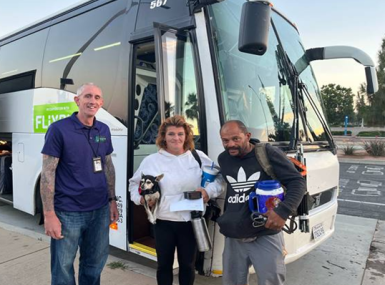NACo Broadband Task Force seeks solutions for counties
Author
Upcoming Events
Related News

Key Takeaways
As the United States bypasses the one-year mark since the start of the COVID-19 pandemic, counties are working to come up with solutions to bridge the digital divide.
From virtual learning to telemedicine and workforce adaptations, the pandemic has highlighted the need for broadband infrastructure and the importance of reliable internet speeds for all counties across the country.
NACo President and Boone County, Ky. Judge/Executive Gary Moore announced in 2020 the formation of NACo’s Broadband Task Force composed of three dozen county government officials. The group is focused on the challenges and opportunities facing underserved communities and the intersection of public and private sectors’ efforts to deploy broadband. Its goal is to create a blueprint for governments working to bridge the digital divide.
In 2020, Congress passed the Broadband Data Act which requires the Federal Communications Commission (FCC) to change the way broadband data is collected, verified and reported. The FCC secured funding through a provision in the year-end funding package Congress passed in December and is now moving forward with the implementation of the legislation.
Additionally, the FCC adopted new rules for the Digital Opportunity Data Collection to ensure the accurate collection of broadband deployment data. The new rules specify the fixed and mobile broadband service providers that are required to report availability and coverage data.
The rules also adopt requirements for reporting speed for fixed technologies and requires that fixed broadband internet access providers report whether broadband services are offered to residential and business customers.
These rules set standards for collecting broadband deployment data from state, local and tribal mapping entities.
NACo previously launched the “TestIT” mobile app that emphasizes the need for complete and accurate broadband data. The app highlights the gaps in the FCC’s broadband maps, which are used by federal agencies to determine funding needs for investments.
Data collected from the app found that roughly 65 percent of all counties are experiencing the Internet below the FCC’s definition of broadband, according to NACo’s connectivity report, “Understanding the True State of Connectivity in America.”
As more internet disparities have become apparent because of the pandemic, the recently passed American Rescue Plan includes $10 billion for capital projects, including broadband infrastructure, for states, localities, territories and tribal governments. Projects may relate to enabling work, education, health monitoring and remote options. An additional $7 billion has been allotted to the FCC for its Emergency Connectivity Fund and E-Rate program, which helps schools and libraries support virtual learning. This plan allows counties to make necessary investments in broadband infrastructure.
Each subcommittee will report on their identified goals during the task force’s monthly meeting on March 24. The livestream link is available to stream for Legislative Conference attendees.

Attachments
Related News

U.S House Subcommittee Considers Reauthorization of the State and Local Cybersecurity Grant Program
The SLCGP provides critical funding to state and local governments to enhance cybersecurity readiness and protection but is set to expire on September 30, 2025.

Team approach, website help California county tackle homelessness
Riverside County, Calif. created a multidisciplinary team to better and more efficiently serve its unsheltered population and share success stories and data through a website.

Podcast: The CIO Reserves
Greenbrier County, W.Va. Commissioner Tammy Tincher, Cook County, Ill. CIO Tom Lynch and NACo CIO Rita Reynolds discuss the pilot CIO Reserves program, which offers IT experts to help rural counties assess their technology and cybersecurity needs.
